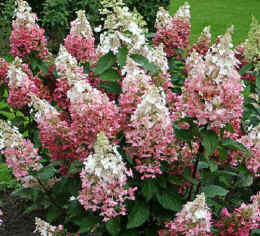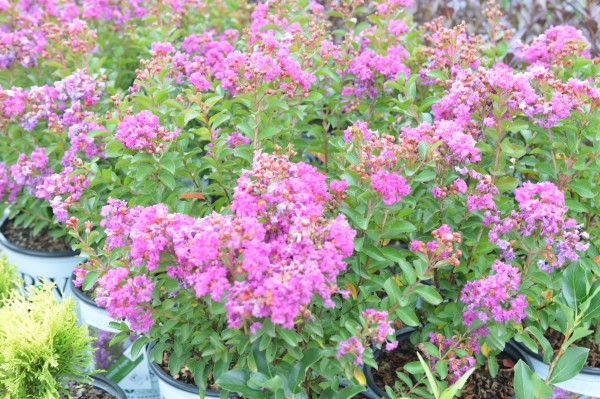You usually think of leaves being green, but they contain many other plant pigments. Anthocyanins produce the red/purple/blue color found in beets and carotenoids form the yellow/orange colors found in carrots. In the fall as plants are preparing for winter dormancy, they have stored the nutrients they need to see them through until next spring and they shut down their photosynthesis efforts. The green pigment in the leaves, chlorophyll, which harnesses sunlight to produce sugars is no longer needed. As this green chlorophyll breaks down, the other pigments the reds, orange and yellow are allowed to shine. The colors are enhanced by cool nights, so we always get the best fall display when we have sunny days, adequate rainfall and cool nights.
That being said- not all trees and shrubs have beautiful colors hiding beneath the green. Here are some of my favorites.
Yellow is probably the hardest. Of the shrubs, clethra, or summer sweet, has the best yellow foliage color in my opinion. Combined with fragrant white flowers spikes in the summer, it is a good choice for a damp spot. Ginkos, one of the oldest tree species, also put on quite the show. Their fan-shaped leaves turn a brilliant yellow in the fall. These trees are diecious- meaning they have separate male and female plants. Look for male selections as the females produce terribly smelly fruit when pollinated. Some perennials also have attractive fall color- the delicate feathery foliage of Amsonia or Arkansas blue star turns a glowing golden yellow in the fall, and is arguably more attractive than its spring bloom. Witchhazels have lovely yellow fall leaf color as do Norway Maples.
Norway maples were brought to the US by Philadelphia botanist John Bartram in the 1930s. They were planted in abundance because they grow quickly and tolerate urban and other tough growing conditions They were a replacement tree for Elms that were wiped out by Dutch Elm disease. However, they reseed readily making them a nuisance. Norway maples also have a very shallow root system which makes it almost impossible to grow anything under them. I do not recommend them.
Orange- The best shrub for orange fall color is smokebush, or cotinus. Most ornamental cotinus plants have purple foliage through the summer and rather unusual wispy flowers in the spring reminiscent of smoke, but their orange fall foliage is outstanding. Fothergilla, or bottlebrush, is a native shrub 2-4 feet tall with white flowers in early spring before the leaves emerge. It gives a second act in September and October when its leaves become a flaming orange. The trees stewartia and many green-leaved Japanese maples have stunning orange fall color- I love to drive by the house on 222 by the stop light in Quarryville. That Japanese maple must be 50 years old and is just breathtaking in the fall.
Red is probably the most common fall color. Shrubs like oakleaf hydrangeas, burning bush, chokeberry, itea (sweetspire), and most of the viburnums share red-purple fall color. I particularly like the Viburnum nudum ‘Brandywine’ or ‘Winterthur’ bushes because their foliage is glossy; making the color that much more eye-catching. For trees, dogwoods and sugar maples are probably my favorite. On the farm we have a flowering pink flowering dogwood that is underplanted with pink bleeding hearts and white Solomon’s seal. Those go dormant over the summer and the fall garden features blue aconitum and the yellow foliaged amsonia under the red foliage of the dogwood. I almost like the fall show better.
Summer hasn’t quite released us yet, but autumn is coming. As the foliage starts to turn I think about the cycle of nature and how the plants are getting ready for rest. It is beautiful, the heralding of the change of season. And I’m ready for a rest from the gardening season too.


 Last week this space featured crape myrtles. Formerly a Southern-only plant, breeding for cold hardiness allowed this summer-blooming shrub to creep further up the coast.
Last week this space featured crape myrtles. Formerly a Southern-only plant, breeding for cold hardiness allowed this summer-blooming shrub to creep further up the coast.